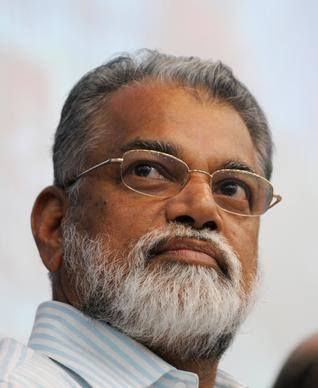In what has come as a surprise to almost ever space enthusiast within and outside India, Indian Government has just appointed Shailesh Nayak as ad-hoc Chairman of ISRO. This followed after K Radhakrishnan, ISRO’s current chairman announced his retirement
This means that Nayak would be an interim Chairman of ISRO for a period of one month, after which, either a new chief will be appointed or he will formally continue as ISRO chief.
Radhakrishnan was given a one-year extension last year, when his tenure ended and Government was unable to find a suitable replacement.
Appointment of Nayak comes as a shock, considering the fact that Government had deployed a search committee headed by former Isro chairman U R Rao. Names of Satish Dhawan Space Centre director M Y S Prasad and Space Application Centre director Kiran Kumar were being closely considered for the post, but it is believed that PM Narendra Modi liked neither of them.
ISRO is currently at its prime, with a test-phase of manned mission already successful. Under Radhakrisnan, ISRO achieved some of the major landmarks in India’s entire space history.
ISRO has now officially announced Radhakrishnan’s departure in a Facebook Post. Here’s the entire post :
Man of Steel
ISRO bids a sombre farewell to its iconic leader, Dr. K. Radhakrishnan, who superannuated today. An efficient engineer, magnificent manager, an impeccable institution builder; and an inspiring leader – Dr. Radhakrishnan triumphantly led ISRO through many historic milestones in the last five years being at the helm of affairs.
He was conferred with Padma- Bhushan, the third highest Civilian Award in India, in 2014. A Distinguished Alumnus Awardee of both IIT Kharagpur and IIM Bangalore – he was recognised with several distinctions. Being in the top ten scientific personalities in 2014 by Nature Science Journal, The Allan D Emil Award of International Astronautical Federation are some of glimpses of his international recognition.
After completing his graduation in Electrical Engineering from Kerala University, he joined Vikram Sarabhai Space Centre (VSSC) in 1972 and rose through the ranks, in brisk pace. He was handpicked by Prof. Satish Dhawan – the then Chairman of ISRO, to control and monitor the Budget and Economic Analysis activities at ISRO Head Quarters. By then he had completed his post graduation from the Indian Institute of Management, Bangalore. He bloomed to full glory at ISRO during 1981-2000 – in a period when he occupied several coveted positions like Project Director for establishment of Regional Remote Sensing Centers, Director of Budget and Economic Analyses, Program Director for National Natural Resource Management Systems and Mission Director of Integrated Mission of Sustainable Development and Deputy Director at the National Remote Sensing Agency (NRSA), Hyderabad. Meanwhile he also completed his PhD from Indian Institute of Technology, Kharagpur.
During 2000-2005 he had a small stint at Ministry of Earth Science – where he established the Indian National Centre for Ocean Information Services (INCOIS) and India’s Tsunami Warning Centre.
He came back to ISRO as Director of NRSA and went on to become the Director of VSSC, his alma-mater at ISRO. After delivering five consecutive successful PSLV missions including the PSLV-C11 that lofted Chandrayaan-1 and leading several crucial technology development at VSSC – he took over the reins of Indian Space Programme in November 2009; and the rest are matters of legend.
With the 12 successful PSLV missions, the successful GSLV with indigenous cryogenic stage, the Mars Orbiter Mission, the LVM-3 experimental flight with CARE module, the Six INSAT/GSAT satellites, three navigation Satellites and Six Earth Observation satellites (including RISAT-1, the first microwave imaging satellite) Dr. Radhakrishnan is leaving ISRO at its most glorified pedestal ever.
Team ISRO is determined –to strive harder to match the standard that he set and of course carry the organization to much higher level from here.
Sir, it has really been an honour for all of us to be a part of your team – wishing you the very best for all your future endeavours!
The Tech Portal is published by Blue Box Media Private Limited. Our investors have no influence over our reporting. Read our full Ownership and Funding Disclosure →







2 comments
Future Chief of such prestigious and scientific organisation should be led by a scientist or technologist well conversant in space craft&rocket technology and not by babus or management gurus.Considering the vision and mission a person having minimum 3 to 5 years continous service need to be appointed.The scientists at the verge of superannuation(beyond62-64 year old) may be retained as advisors and not in executive role.Induction of outsider into the post may jeopardise the existing system and growth. Experts from abroad may lead to country’s security problem..
very correct. agreed.